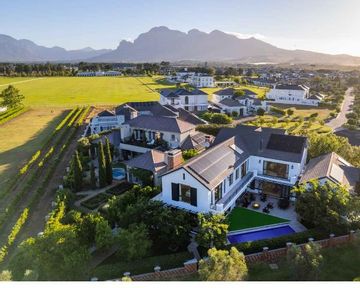Retail Property – From Covid-19 Risk to Stagflation Risk
| By John Loos, Property Sector Strategist at FNB Commercial Property Finance
The multi-year retail property market correction appears likely to continue during FNB’s economic forecast period. During the 2020 hard lockdown period, we saw the average retail property capital value per square metre decline by -7.41%, using MSCI data, before resuming low positive growth of +1.54% (MSCI data) in 2021.
But the low positive growth rate achieved did not mean the end of the long-run correction. The +1.54% growth rate in 2021 translates into a real, GDP inflation-adjusted, a decline in capital value to the tune of -5.2%, so in reality, the retail property value correction continues.
Using the inflation-adjusted real value measure, the cumulative decline in real retail capital value/square metre has been -24.4% from the all-time high reached in 2015.
This has been influenced to a large degree by a cumulative decline in real (GDP inflation-adjusted) net operating income of -18.5% since 2015, a reflection of the gradual increase in financial pressure on consumers as economic growth has broadly stagnated over the past decade or so.
There is little doubt, however, that since the sharp 2020 lockdown-related dip in GDP and Household Disposable Income, things have improved for the consumer and for the retail and retail property sectors. But as yet, it is not clear that the improvement from that abnormal 2020 situation is sufficient to take retail property net income and capital value growth back into positive real growth on a sustainable basis.
1st Quarter consumer confidence, according to the FNB-BER Consumer Confidence Index, showed renewed deterioration from an already weak -9 in the prior quarter to -13 in the 1st quarter, with consumer price (CPI) inflation pressures becoming more severe, global oil price pressures translating into significant petrol price increase, and Ukraine conflict-related food price pressures threatening. Coupled to these inflation pressures are major global supply chain disruptions, started during Covid-19 lockdowns and looking to continue due to renewed Chinese lockdowns and a myriad of Russia boycotts and sanctions. Global “stagflation” is a risk much talked about across the world at present, a scenario of higher inflation and low growth. This is a key risk from a retail property point of view.
Domestically, CPI inflation isn’t severe yet, at 5.9% year-on-year for March, but it has risen markedly since the 2% low of May 2021, implying a more significant dent in real disposable income from inflation of late compared to just under a year ago. This, along with little further “normalisation” in economic activity to come since the hard lockdowns of 2020, leads to an FNB Real Household Disposable Income forecast of 2.1%, slower than the 4.2% for 2021, leading to similar low single-digit real consumption growth.
Shifting back into low economic and real household disposable income growth territory, similar to rates of the past decade, appears to be a recipe for further gradual drift lower in real retail property values.
In short, 2022 is expected to see retail property continue on its longer-term path of nominal income and capital value growth but real income and capital value decline.
More interesting though, we believe, is that super-regional centres look to be closing the performance gap between themselves and the smaller community and neighbourhood centres. The good news appears to be that Covid-19 has receded as a risk in South Africa, and restaurants and entertainment areas of retail have been partially on the mend. This can greatly improve the fortunes of those larger “experience” shopping centres that are heavier on non-essential spend and entertainment, and perhaps this is what we are already seeing in the Super Regional category, if not as much in the smaller regional categories.

